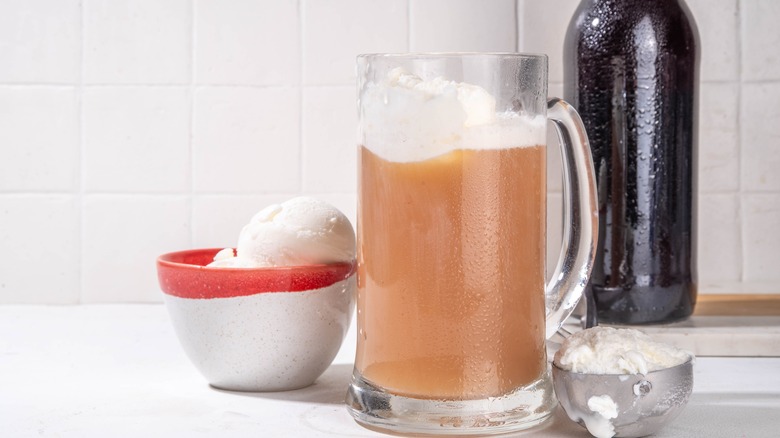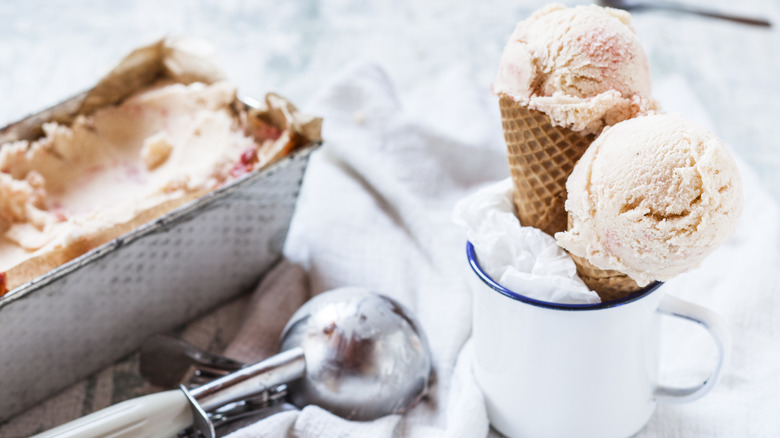The Step You Need To Take Before Adding Beer Or Wine To Ice Cream
Ice cream and booze are two treats that are even better together. A splash of liqueur or a drizzle of rum in your homemade ice cream is an especially sophisticated way to play Willy Wonka; it unlocks all kinds of complex flavors and dreamy textures. Many chefs and bakers shy away from utilizing beer and wine, though — and this is one of the biggest mistakes you can make when creating boozy ice cream. The things you might worry about when trying to craft beer or wine-flavored ice cream can be easily overcome, and the flavor pay-off is irresistible. Just think about the fruity rosé prosecco sorbet you could make, or the milk stout and brownie chunk ice cream.
One step can squash all your beer and wine worries: Reducing the alcohol before adding it to the ice cream and setting aside a little bit to splash back in at the last minute. The reasons this works, and why it's necessary here when it isn't for higher-proof spirits and liqueurs, comes down to flavor, consistency, and freezing ability. You're looking to manipulate the water content in beer and wine, and you're adding in that final splash to reintroduce any flavor intensity lost in the process.
Why reducing beer and wine helps make better ice cream
Water has a freezing point of 32 degrees Fahrenheit, whereas a 40% ABV spirit like vodka's freezing point is -17 degrees. When you incorporate a spirit or liqueur into ice cream, it lowers the overall freezing point, boosting smoothness and scooping ease — but adding too much liquor could just give you soupy ice cream. Wine, however, has a freezing point of 23 degrees; for beer, it's 28. Because those freezing points are much closer to water, wine and beer in their default states don't add much creaminess, and could, as they freeze, water down the ice cream. That's why you should employ reduction the same way you would when making a wine sauce. As the beer or wine simmers over heat, a portion of the liquid will evaporate, and sugars will caramelize into a syrup. That syrup has a luscious consistency for ice cream, and less water to sabotage your final recipe.
The reduction step requires setting a bit of beer or wine aside for the last second, though, because you won't have quite as bold a flavor post-reduction. So, right as you're about to introduce your reduced beer or wine into your ice cream, add the non-reduced bit back in to really punch up a Witbier's spices and citrus or a Pinot Noir's jamminess. With this quick and approachable two-part step, you'll have flavorful — and creamy — ice cream.

